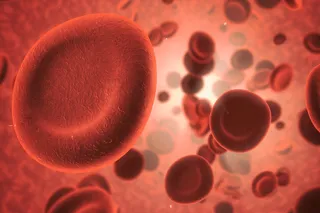Smartwatches may be able to buy potential Parkinson’s patients valuable time when it comes to diagnosis.
New research reveals that these devices can detect the degenerative condition years before the symptoms become serious, based solely on the movement and sleep patterns of those who wear them.
“Parkinson’s disease is primarily a movement disorder and we know that before a clinical diagnosis is made where all these motor symptoms have to be present, there’s a long phase where neuronal damage already occurs,” says Ann-Kathrin Schalkamp, a computational biologist at Cardiff University. “We know that if we want to treat it, we need to target people before all this early damage occurs.”
How Is Parkinson's Disease Traditionally Diagnosed?
Parkinson’s disease currently has no cure. In fact, researchers aren’t even sure about what causes this brain disorder. The symptoms include stiffness, a slowing of body movements and tremors. Over time, it can cause difficulty in walking, talking and problems with sleeping and memory, among other things.
According to the National Institutes of Health, Parkinson’s is the second most common neurodegenerative disorder in the U.S., with about 500,000 Americans diagnosed and possibly many more undiagnosed or misdiagnosed.
Early onset Parkinson’s can affect younger people, as in the well-known cases of Muhammad Ali and Michael J. Fox, but it’s a disease that’s primarily detected in the elderly— most over 60 years of age. Just the same, by the time symptoms appear, the disorder has likely been going on for years, up to two decades before diagnosis, Schalkamp says.
“The biological conditions of Parkinson’s diseases start years before the clinical diagnosis,” says Cynthia Sandor, a neuroscientist at Cardiff University.
Read More: What Is Deep Brain Stimulation, and Why Does It Work for Parkinson's?
How Are Scientists Using Smartwatches to Diagnose Parkinson's Earlier?
For a recent study published in Nature Medicine, Schalkamp, Sandor and their colleagues arranged to have a randomly selected subset of 103,712 people who wear smartwatches for one week at a time, from 2013 to 2015.
Notably, these watches had accelerometers built in — a device that tracks the speed of the wearer's movement. Because slowed movements are often an early Parkinson's symptom, the researchers theorized, tracking how quickly an individual moves could help with earlier diagnosis of the disease.
“It’s exactly the same software in an Apple Watch or Fitbit,” Sandor says, adding that these devices gave her team more in-depth, granular details about movement and even sleep patterns.
To aid them in their investigation, the researchers harnessed the United Kingdom’s Biobank, a database that has kept in-depth, anonymous genetic and health information from 500,000 people aged from 40 to 69 since 2006.
The U.K. Biobank data revealed that prior to the smartwatch study, 272 of the 103,712 people that wore smartwatches had already been diagnosed with Parkinson’s. A further 196 people hadn’t yet been diagnosed with Parkinson’s prior to 2013, but were diagnosed before 2021 — the cut off time for the new study.
Read More: Could Loss of Smell Cause Dementia or Parkinson's?
What Does This Mean for Patients of Parkinson's?
The team used the data from the more recently diagnosed individuals, comparing it with those that hadn’t been diagnosed. They developed a model that could detect the way the movement and sleep patterns of people that presumably had recently contracted the disorder with those that didn’t have it; essentially creating an early detection system for smartwatch users. “I derived a long-term digital risk score,” Schalkamp says.
Basically, this means that with just one week of data, the researchers were able to predict a Parkinson’s diagnosis up to seven years ahead of symptoms.
While there is currently no cure for Parkinson’s, the researchers say that a key part of helping people when a cure is available will be finding them early. Usually by the time doctors diagnose patients using traditional methods, it’s already too late, as much of the damage had occurred years earlier.
“Maybe we are targeting people at the wrong time,” Schalkamp says, adding that by using this method, doctors can find the people that may best respond to treatments, when these are developed. “The goal of identifying people early is based on that aim that we want to treat them at some point.”
Read More: How Your Brain’s “Fingerprints” Could Diagnose Disease















